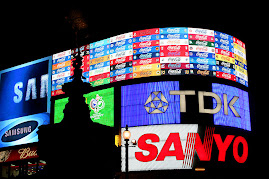Trafalgar Square is a square in central London. With its position in the heart of London, it is a tourist attraction; and one of the most famous squares in the United Kingdom and the world.
The name commemorates the Battle of Trafalgar, a British naval victory of the Napoleonic Wars. The original name was ‘King William the Fourth's Square’ and later was changed to "Trafalgar Square".
In his centre it’s Nelson's Column, which is guarded by four huge bronze lions statues at its base.
The square has become a social and political location for visitors and Londoners, in the square are some figures of national heroes
It’s square where the Londoners celebrated the New year, the Christmas day and the Victory in Europe Day commemorate the date when Nazi Germany and Adolf Hitler ends during the Second World War officially, also sports events and others uses like: film scenes, political demonstrations, St George’s day and musical events.
The day after Michael Jackson’s death, a lot of fans met in Trafalgar Square to do the moonwalk in his memory.
In trafalgar square we can find:

Guillem G 1st Bat B
Marc C 1st Bat B






